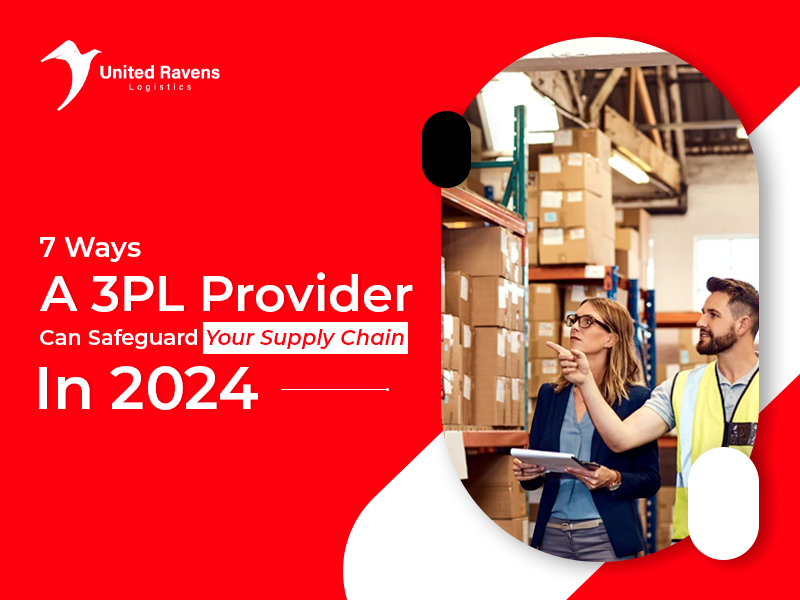There is no doubt that growth is accompanied by opportunity, along with the possibility of hurdles. If your supply chain business is already expanding, one thing you surely know by now is that this is especially relevant when it comes to 3PL provider, shipping, and fulfillment. It becomes hard to concentrate on marketing, design, and customer relationship management when most of your time goes into finding cargo contracts and loads or driving on the road.
According to Mordor Intelligence analysis, the third-party logistics market is expected to be worth $1.59 trillion by the year 2028. So, no matter what the industry is, third-party logistics (or 3PL) services will always be in high demand. If it’s your first time collaborating with a 3PL provider or multiple 3PL partnerships to reduce risks, then here are the things that you need to learn to safeguard your supply chain business.
7 Ways a 3PL Provider Can Protect Your Supply Chain Business in 2024
A 3PL provider is responsible for managing shipping and distributing goods by employing a large network of shippers and carriers. Many supply chain businesses use these services because third-party logistics providers have access to various resources that most supply chains cannot get hold of.
Therefore, the aim is always to make freight forwarding more efficient to reduce costs. Here are 7 ways by which partnering with a skilled 3PL logistics service provider can navigate these challenges easily.
Retention and Talent Acquisition
The logistics industry in general is facing the problem of a very limited workforce. Experienced employees, including beginners, are now retiring to create a vacuum of valuable experience. However, recruiting and maintaining top performers, from truck drivers to supply chain managers and data scientists, remains a key issue.
Solution: One area where 3PL companies are reacting is through the use of technology to refine operations, get the job done on time, and prevent errors.
Increasing Energy and Transportation Prices
Fuel prices and transportation costs are increasing, so 3PLs are affected by their profit margin. While 3PLs try to juggle between rate adjustments and pass on rising costs, and maintain competitiveness, the negotiation of load contracts becomes a tough challenge.
Solution: 3PL companies can help bring fuel prices down by working on route optimization, long-term carrier contracts, and adopting pricing to meet the fluctuating costs.
Pressure of Globalization
Globalization has initiated enhanced competition and demanding supply chain management. Commonly seen instances are where smaller 3PLs struggle to survive in an industry dominated by major players who succeed by forming strategic alliances, takeovers, or mergers in the search for a global market position.
Solution: In a way, these 3PLs sought profitability by focusing on specific types of customers, making marketplace linkages, and integrating technology integration for global supply chains. It is important to practice specialization, as it might provide just the edge that is needed.
Advancement In Technology
Technical advancement that encompasses automation, artificial intelligence, and data analytics is going on at a very high speed. Implementation of new technologies in the old system is expensive and requires a long time. The loss of competitiveness due to the inability to use technology optimally is viewed as the most serious challenge.
Solution: Successful third-party logistics companies are buying automated machines, tools for real-time tracking of shipment, and data analytics for efficiency and, more importantly, to provide better information about the processes they are going through. Technology partners can also provide the most suitable technology integration approach in a phased manner, provided the employees have adequate training to use the technology.
Disruption In the Supply Chain
Geopolitical issues, natural disasters, and global crises (such as seen in the case of the COVID-19 pandemic) may disrupt supply chains too.
Solution: Resilient and agile supply chain designs are the key factors in mitigating the disruptions associated with unplanned disturbances. These strategies include mitigating risks, developing alternate sourcing channels, investing in technology for real-time insight into the supply chain, and planning for contingencies in the event of disruptions.
Cyber Security and Data Security
As logistics becomes increasingly digital, there is an increased risk of cyber threats and breaches of data security. Further, ensuring sensitive data and preserving the integrity of digital systems are continually pressing problems.
Solution: Firms must do everything to prevent cyber threats from the outside and the inside and train their employees to detect potential threats.
Capacity Constraints
Warehouses are generally built to meet deadlines. Many businesses are currently close to full capacity, which is making the costs of expanding a new storage facility even higher.
Solution: Companies that have space constraints and cannot afford larger warehouses are forced to use their existing areas in a more efficient way. Many businesses see putting investment into technology that maximizes warehouse capacity while ensuring scalability as the key to the solution.
Final Thoughts
To wrap it up, partnering with a 3PL logistics company is one of the best methods of providing your business with a hedge against the future of e-commerce in 2022 and beyond. They serve as a useful tool that gives you more control over the weak links in your supply chain, helps you identify the needs of your customers, and helps you stay competitive even amid the unstable state of global affairs.

